Karnataka cuisine, rooted in the southern region of India, is a delightful tapestry of flavors, textures, and aromas that epitomize the diverse culinary heritage of the state. Encompassing a wide array of dishes influenced by its geographical diversity, Karnataka Cuisine boasts a harmonious blend of coastal, plains, and hillside delicacies. From the aromatic Bisi Bele Bath to the delectable Mysore Pak and crisp Maddur Vada, each dish tells a story of tradition, history, and cultural exchange. With its emphasis on fresh, locally sourced ingredients and intricate spice blends, Karnataka cuisine offers a captivating culinary journey through the vibrant flavors of South India.
Vada
-1708572638.jpg)
Vada is a popular dish in Karnataka cuisine, known for its crispy exterior and soft, fluffy interior. It is a deep-fried savory snack made from a fermented batter of lentils and spices. The main ingredient used in making vada is urad dal, which is soaked, ground to a smooth paste, and then mixed with various seasonings like chopped onions, green chilies, ginger, curry leaves, and coriander. The batter is then shaped into small, round discs or doughnuts and deep-fried until golden brown and crispy. Vadas are usually served hot and enjoyed with a variety of chutneys or sambar.
Dosa
-1707383410.jpg)
Karnataka cuisine is known for its rich and diverse flavors, and one of its most popular dishes is the dosa. A dosa is a savory pancake made from fermented rice and lentil batter. The batter is spread thinly on a hot griddle, creating a crispy and golden crepe-like texture. Dosa is also prepared with a variety of fillings. The most common filling is a spiced potato mixture, but there are many variations available, including onion, paneer. A dosa is typically served with coconut chutney and sambar, a tangy lentil soup.
Idli
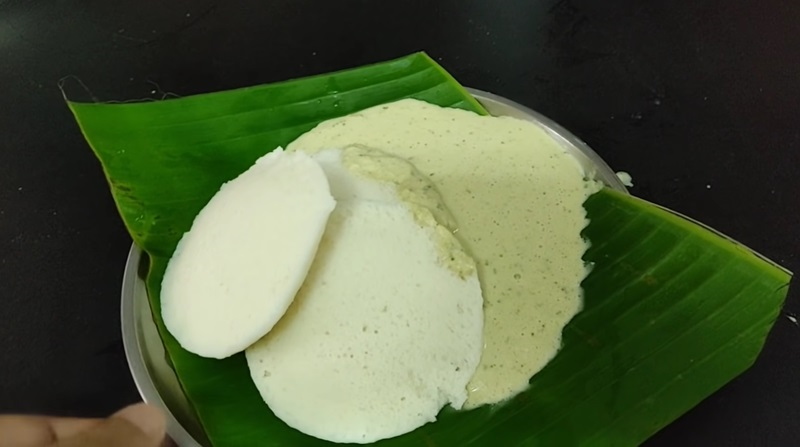
Idli is a steamed cake made from fermented rice and lentil batter. It is soft, fluffy, and extremely light on the stomach. To make idli, a mixture of soaked rice and urad dal (split black gram) is ground into a smooth paste and left to ferment overnight. The fermented batter is then poured into small, round molds and steamed until cooked. The result is a perfect, white idli with a spongy texture. Idli is typically served with a variety of accompaniments like coconut chutney, sambar (a lentil and vegetable stew), and a spicy tomato-based chutney. It is a healthy and nutritious option as it is low in calories, easily digestible, and packed with protein.
Filter Coffee
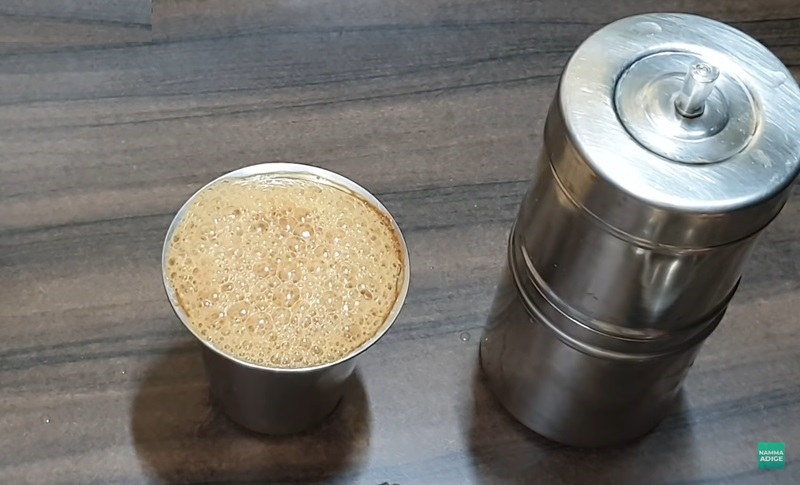
Filter Coffee is a famous Karnataka dish renowned for its vibrant flavors. It is traditionally prepared using a metal filter, where finely ground coffee beans are brewed with boiling water. The resulting decoction is then combined with hot milk and served in a stainless-steel tumbler and dabara. What distinguishes Indian filter coffee is its unique taste and texture, setting it apart from other coffee types. It is typically robust and intense, emanating a delightful aroma as you savor each sip. The frothy layer on the surface adds a velvety smoothness to every mouthful. The coffee's earthy undertones are flawlessly balanced by the creamy sweetness of the milk, resulting in a harmonious and flavorful experience.
Sambar
-1705564408.jpg)
Sambar is a flavorful lentil-based curry made with a variety of vegetables and a unique blend of spices. The key ingredients in Sambar include toor dal (pigeon pea lentils), tamarind, and a special spice mix called sambar powder. To prepare Sambar, the toor dal is cooked until soft and mashed. Meanwhile, a mix of vegetables like drumsticks, eggplant, pumpkin, and okra are sautéed with mustard seeds, curry leaves, and asafoetida. The cooked dal is then added to the vegetables, along with tamarind pulp, sambar powder, and salt. The dish is simmered until the flavors meld together, resulting in a thick and aromatic curry.
Upma
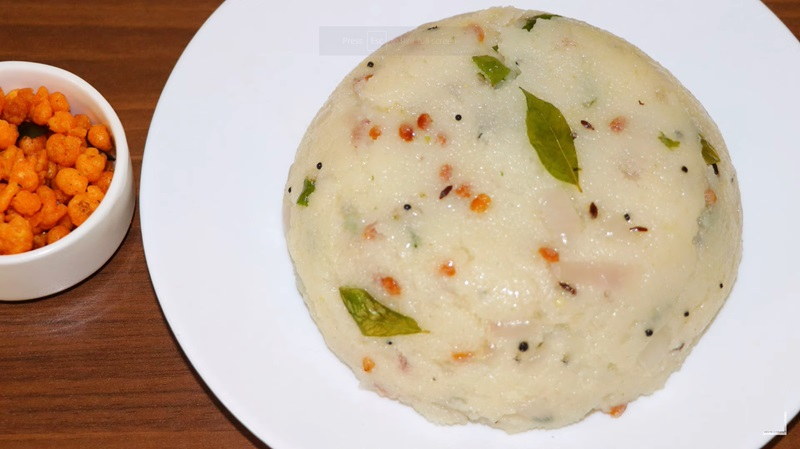
Upma is a simple yet flavorful dish made with semolina or rava, along with a variety of vegetables and spices. To make Upma, first, the semolina is roasted in ghee until it turns golden brown, which gives it a nutty flavor. Then, it is cooked with water or vegetable broth until it reaches a smooth and fluffy consistency. Meanwhile, a tempering of mustard seeds, urad dal, curry leaves, green chilies, and ginger is prepared in another pan. This tempering is then added to the cooked semolina along with finely chopped onions, carrots, peas, and other vegetables of choice. The dish is further flavored with turmeric powder, salt, and a squeeze of lemon juice. Upma is usually garnished with freshly grated coconut, coriander leaves, and roasted peanuts, which add a crunchy texture and enhance the flavors. It is best served hot and can be enjoyed on its own or with coconut chutney or sambar.
Mysore Pak
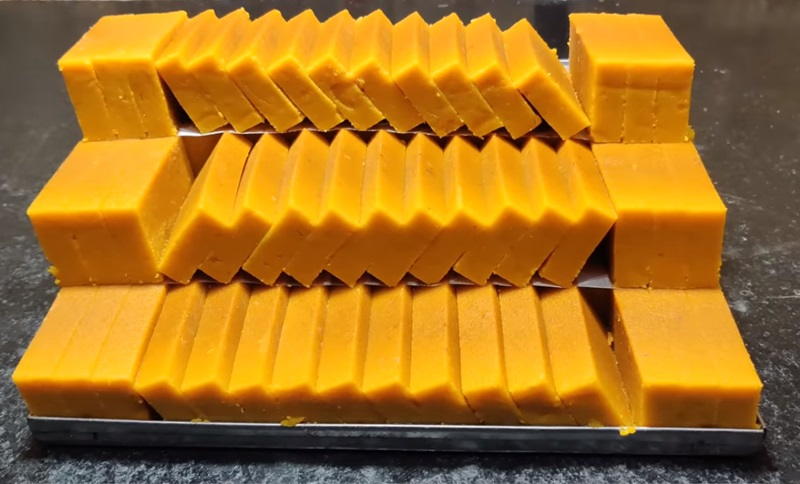
Mysore pak is a delectable traditional sweet from the state of Karnataka, India. It is believed to have originated in the city of Mysore during the reign of the Wodeyar dynasty. Mysore pak is made primarily from three ingredients - gram flour (besan), ghee (clarified butter), and sugar. The dish is prepared by roasting the gram flour in ghee until it turns golden brown and releases a delightful aroma. Once the flour is well-roasted, sugar syrup is poured into the mixture, which is then further cooked until it thickens and attains a smooth, fudgy consistency. The ghee imparts a rich flavor and a melt-in-your-mouth texture to the sweet. Mysore pak is known for its unique taste that perfectly balances the sweetness of sugar with the nutty flavor of gram flour and the richness of ghee. It is usually cut into bite-sized pieces and served as a dessert.
Masala Dosa
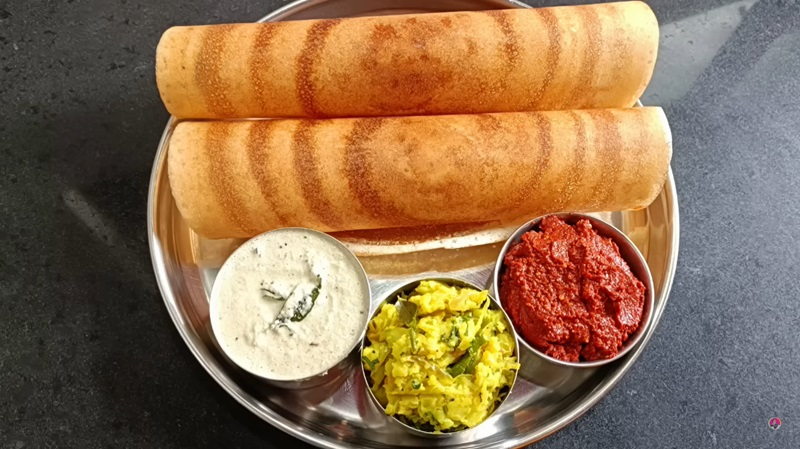
Masala dosa is a type of pancake made from fermented rice and lentil batter, which is then filled with a spiced potato mixture. The dosa is cooked on a hot griddle until it becomes crispy and golden brown. The filling of the masala dosa is what sets it apart from regular dosas. The potato mixture is prepared by sautéing mashed potatoes with onions, green chilies, ginger, and a blend of aromatic spices such as turmeric, mustard seeds, and curry leaves. This flavorful mixture is then spread evenly inside the dosa before it is folded into a cylindrical shape. Masala dosa is typically served with an assortment of accompaniments, including coconut chutney, sambar, and a spicy tomato-based chutney.
Rasam
-1708587968.jpg)
Rasam is a tangy and spicy soup made with tamarind, tomatoes, and a blend of aromatic spices. Rasam is typically served as a part of a traditional meal in Karnataka and is enjoyed as a refreshing appetizer or a digestive aid. To prepare rasam, the key ingredients are tamarind pulp, tomatoes, garlic, black pepper, cumin seeds, coriander leaves, and curry leaves. The spices are roasted and ground to perfection, imparting a distinct flavor to the dish. The tanginess of tamarind and the spiciness of pepper and other spices create a harmonious balance of flavors. Rasam is not only known for its taste but also for its health benefits. It aids in digestion, boosts immunity, and provides relief from cold and cough.
Ragi Mudde
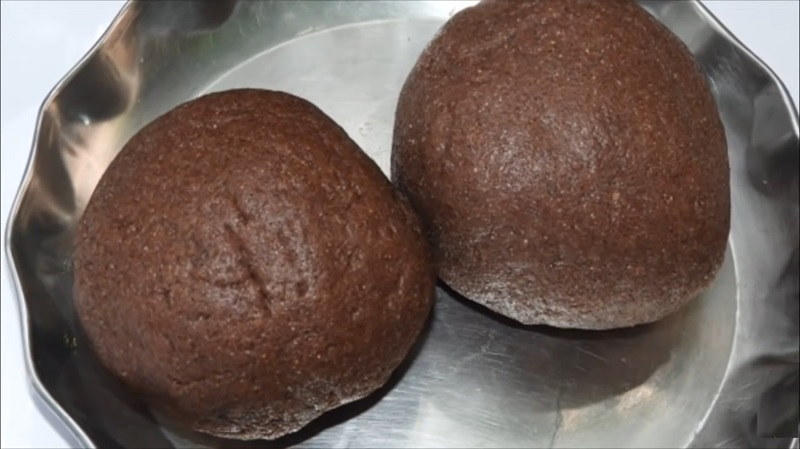
Ragi mudde is a traditional dish from the state of Karnataka, India. Ragi, also known as finger millet, is the main ingredient of this dish. To prepare ragi mudde, ragi flour is mixed with water to form a thick dough-like consistency. The dough is then shaped into small balls and cooked in boiling water. The mudde is typically served hot with various accompaniments. Ragi mudde has a distinct taste and texture. It is dense and has a slightly nutty flavor. The dish is not only delicious but also highly nutritious. Ragi is rich in dietary fiber, calcium, iron, and other essential nutrients, making it a healthy choice for individuals of all ages. Ragi mudde is often paired with a variety of curries or gravies, such as sambar, rasam, or spicy lentil curry.
Uttapam
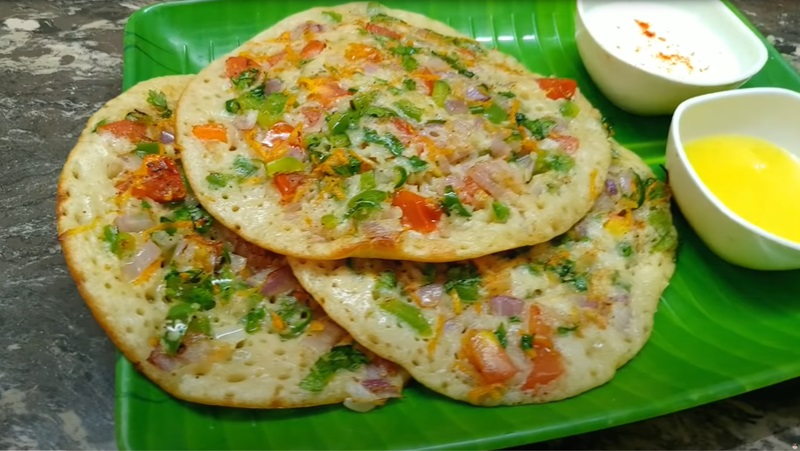
Uttapam is essentially a thick pancake made from fermented rice and lentil batter. This dish is similar to dosa but is thicker and softer in texture. Uttapam is typically served as a breakfast or snack item. The batter for Uttapam is prepared by soaking rice and lentils overnight and then grinding them into a smooth paste. This paste is then fermented for a few hours, allowing it to rise and develop a tangy flavor. The batter is then spread onto a hot griddle in a circular shape and cooked until it becomes golden brown and crispy on the outside. Uttapam can be customized with various toppings like onions, tomatoes, green chilies, and coriander leaves. These toppings are sprinkled over the batter before it is cooked, adding a burst of flavors and colors to the dish.
Bisi Bele Bath
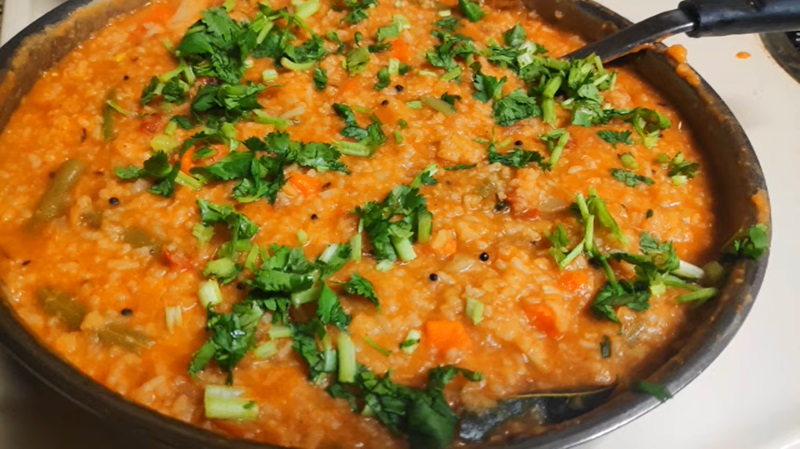
Bisi Bele Bath is a traditional and popular dish from Karnataka. The name "Bisi Bele Bath" translates to "hot lentil rice" in the local language, Kannada. This dish is a flavorful combination of rice, lentils, and an assortment of vegetables, cooked with a unique blend of spices. To prepare bisi bele bath, rice and toor dal (split pigeon peas) are cooked together until soft. Meanwhile, a masala paste is made by grinding roasted spices, including red chilies, coriander seeds, cinnamon, cloves, and fenugreek seeds. This paste is then fried with onions, tomatoes, and a medley of vegetables like carrots, peas, beans, and brinjal (eggplant). Tamarind pulp is added for a tangy flavor, along with jaggery for a hint of sweetness. Finally, the cooked rice and dal mixture is combined with the vegetable masala and simmered until all the flavors meld together. The dish is typically garnished with ghee (clarified butter), roasted cashews, and fresh coriander leaves. Bisi Bele Bath is known for its aromatic blend of spices, balanced flavors, and comforting texture.
Basundi
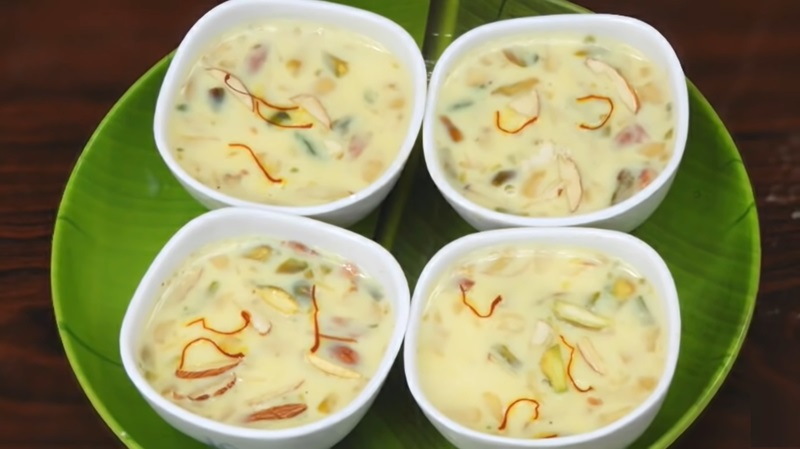
Basundi is a traditional and popular dessert made by boiling milk on low heat until it thickens and reduces in volume. The milk is simmered for a long time to achieve a smooth and luscious texture. To prepare Basundi, full-fat milk is heated in a heavy-bottomed pan and continuously stirred to prevent it from sticking to the bottom. As the milk reduces, sugar is added to sweeten the dish. Along with sugar, aromatic ingredients like cardamom and saffron are added to enhance the flavor and aroma. Basundi is often garnished with nuts like almonds, pistachios, and cashews, adding a crunchy texture to the dish. It is usually served chilled or at room temperature.
Adhirasam
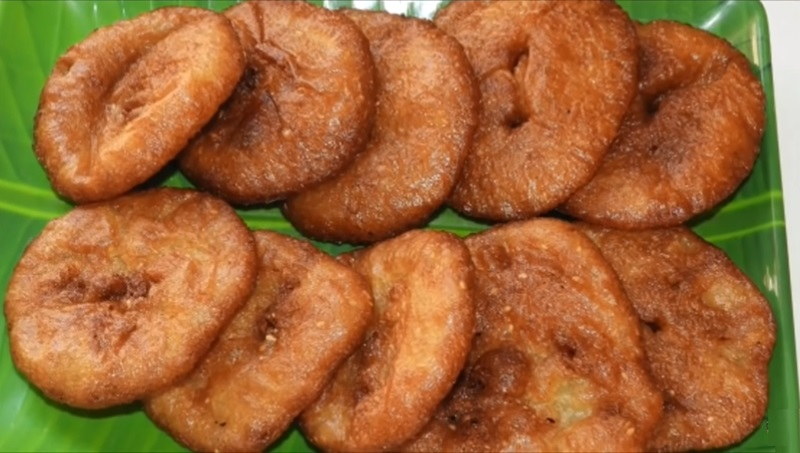
Adhirasam is a traditional sweet dish from the state of Karnataka, India. It is made with a simple mixture of rice flour, jaggery, and cardamom powder. This mixture is kneaded into a dough and then flattened into small disc-shaped patties. These patties are deep-fried until they turn golden brown and develop a crispy texture. The unique taste of Adhirasam comes from the combination of the sweetness from the jaggery and the aromatic flavors of cardamom. The dish is often enjoyed during festivals and special occasions, as it is considered to be an auspicious sweet.
Dharwad Pedha
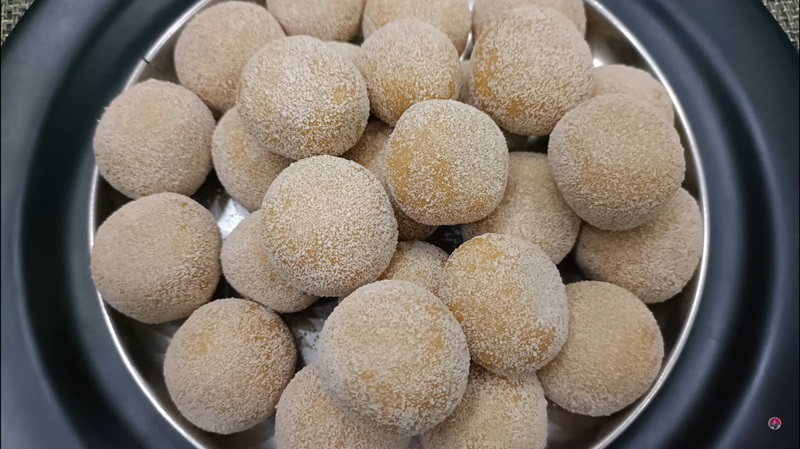
The Dharwad pedha is a renowned sweet delicacy hailing from the vibrant city of Dharwad in Karnataka. This delectable treat has garnered fame not only within Karnataka but also throughout India. Crafted from pure cow's milk, it boasts a luscious and velvety texture. The preparation involves simmering the milk for an extended period until it reduces and thickens. To enhance its taste, it is sweetened with sugar and infused with the delightful flavors of cardamom and a hint of saffron, which lend a captivating aroma. Traditionally, the pedhas are shaped into small, circular discs and adorned with a sliver of pistachio or almond on top. The pedha's outer layer exudes a slightly caramelized texture, while the inside remains irresistibly soft and gooey.
Solkadhi
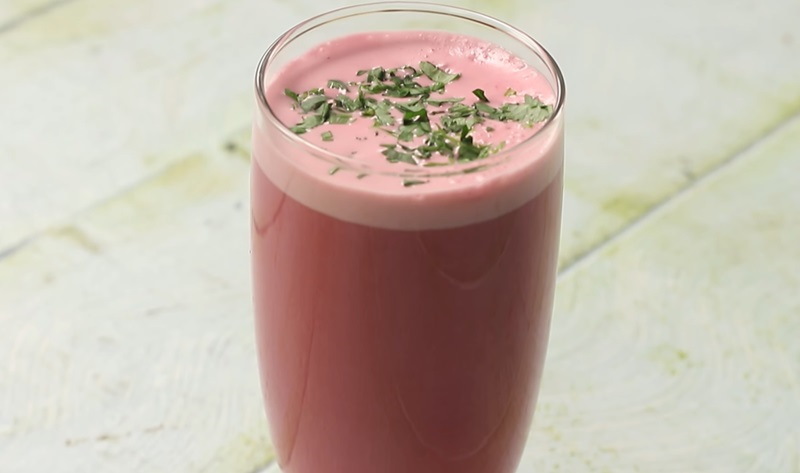
Solkadhi is a traditional drink, made using coconut milk and kokum (a sour fruit native to the region). It is a soothing and tangy drink that is best enjoyed with rice or as a cooling accompaniment to spicy dishes. To prepare solkadhi, freshly grated coconut is mixed with water, and the mixture is then squeezed to obtain coconut milk. This milk is then combined with kokum extract, which gives the drink its signature pink color and tangy taste. To enhance the flavors, ingredients like green chilies, ginger, garlic, and cumin seeds are added and ground into a fine paste. Not only is solkadhi a delicious and refreshing drink, but it also offers numerous health benefits. The combination of coconut milk and kokum is known to aid digestion, cool the body, and provide relief from acidity.
Benne Dose
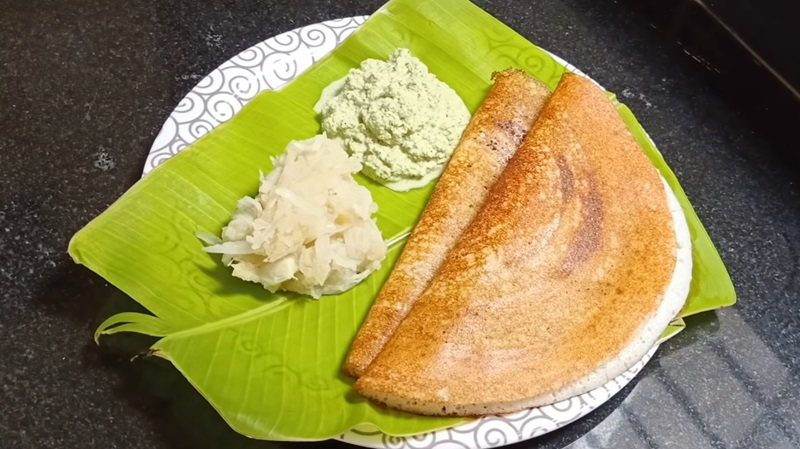
Benne Dose is a popular breakfast dish from Karnataka, a state in southern India known for its rich culinary heritage. The name "Benne" translates to butter, which is a key ingredient in this delightful dish. Benne Dose is a type of dosa, which is a fermented crepe made from rice and lentil batter. What sets benne dose apart is the generous amount of butter used in its preparation. The dosa is cooked on a griddle until it turns golden brown and crispy on the outside, while remaining soft and fluffy on the inside. The butter not only adds a rich and creamy flavor to the dosa but also gives it a distinctive aroma. The dosa is typically served with coconut chutney and sambar, a lentil-based vegetable stew. The combination of the crispy dosa, creamy butter, and flavorful accompaniments creates a delightful burst of flavors that is sure to please the taste buds.
Jolada Rotti
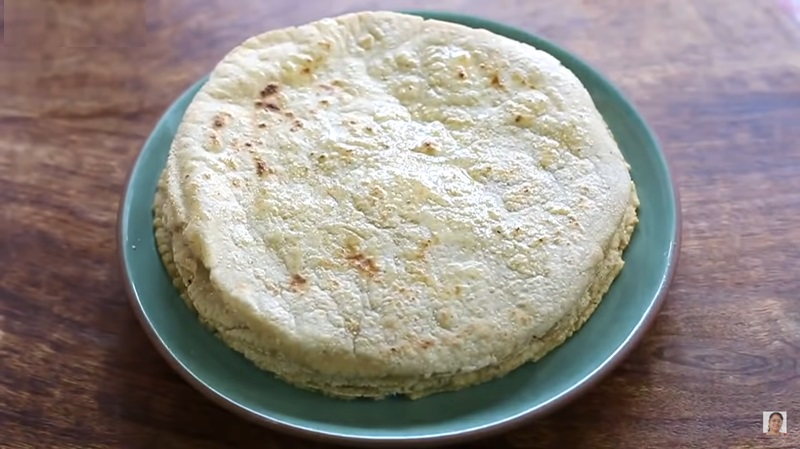
Jolada rotti is a traditional dish from the state of Karnataka in South India. It is a type of unleavened bread made from jowar (sorghum) flour. Jolada rotti is a staple food in many parts of Karnataka and is widely enjoyed for its unique taste and texture. To prepare jolada rotti, the jowar flour is mixed with water and salt to form a dough. The dough is then divided into small portions, which are shaped into round, thin breads. These breads are then cooked on a hot griddle or tawa until they turn golden brown and develop a slightly crispy texture.
Chiroti

Chiroti is a crispy, flaky, and deep-fried pastry made from refined flour (maida), ghee, and a pinch of salt. The dough is prepared by combining these ingredients with water and then rolled out into thin, circular shapes. The rolled dough is then deep-fried in ghee until it turns golden brown and becomes crisp. Once fried, it is removed from the oil and allowed to cool. The crispy chiroti is then dusted with powdered sugar and garnished with chopped almonds or pistachios. Chiroti is often made during festive occasions and special celebrations like weddings and religious festivals.
Chitranna
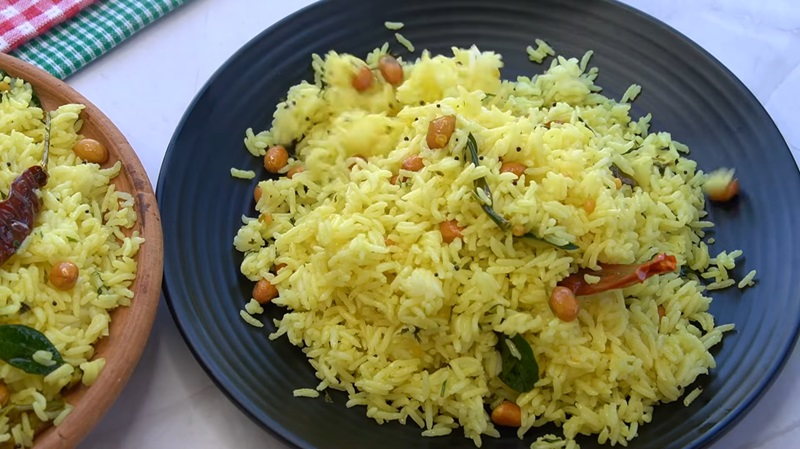
Chitranna is a rice-based delicacy prepared with freshly cooked rice, lemon juice, and a distinctive blend of spices and herbs. Its name, derived from the Kannada word "chitra," meaning colorful, perfectly captures its use of a diverse range of ingredients. To create chitranna, the cooked rice is combined with a tempering of mustard seeds, curry leaves, urad dal, chilies, and turmeric powder. A generous squeeze of lemon juice adds a tangy twist to the dish. Furthermore, ingredients like peanuts, grated coconut, and coriander leaves are often added to enhance the flavor and texture.
Neer Dosa
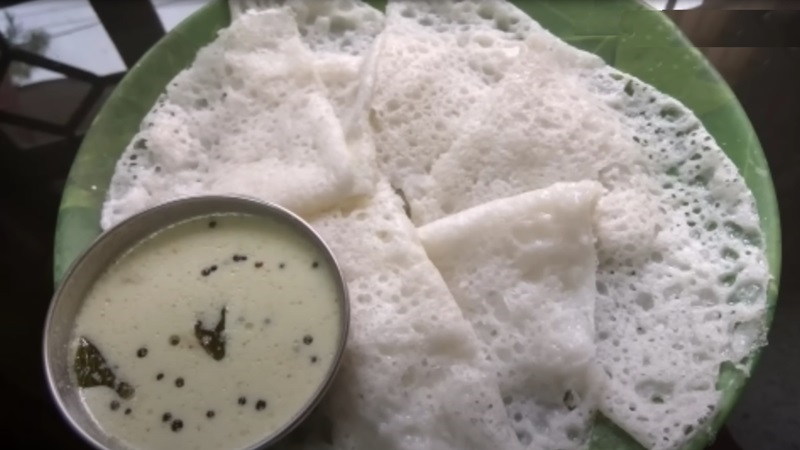
Neer means water in the Kannada language, and as the name suggests, this dosa is made with a watery batter. It is a thin and delicate pancake-like dish that is soft and light in texture. To make neer dosa, rice is soaked overnight and then ground into a smooth paste. The batter is left to ferment for a few hours, giving the dosa its light texture and subtle tanginess. The fermented batter is thinly spread on a hot griddle or tawa and cooked until it turns a slight golden brown with crispy edges.
Rava Idli
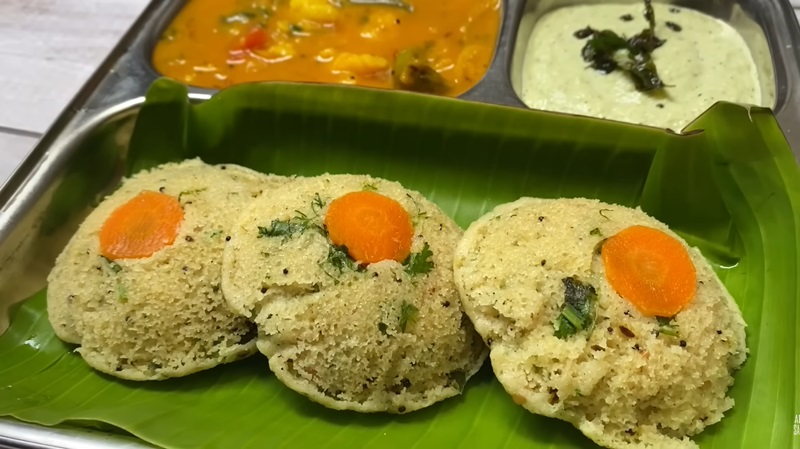
Rava idli is a traditional Kannada dish that is made from semolina (rava) and a variety of spices and herbs. To prepare rava idli, the semolina is mixed with yogurt, grated vegetables such as carrots and peas, and a tempering of mustard seeds, curry leaves, and cashews. The mixture is then steamed in idli molds to create soft and fluffy idlis. What sets Rava idli apart from traditional rice-based idlis is its unique texture and taste. The semolina gives it a slightly grainy texture, while the addition of yogurt and vegetables adds a refreshing and tangy flavor. Rava idli is often served with coconut chutney, tomato chutney, or sambar, a lentil-based vegetable stew.
Sanna
-1708613455.jpg)
Sanna is a steamed rice cake that is fluffy, soft, and slightly tangy in taste. The process of preparing Sanna involves skillfully combining red rice, black lentils, and coconut, with variations in fermentation methods. Hindu sannas are made using urad dal, coconut water, and coconut milk, resulting in a unique flavor. On the other hand, Catholic sannas come in two variations: those made with coconut flower toddy and those made with coconut palm sap-toddy, each offering a distinct taste. Sannas hold a special place in celebrations, often appearing on tables during significant occasions like Ganesh Chaturthi and church feasts.
Kori Rotti
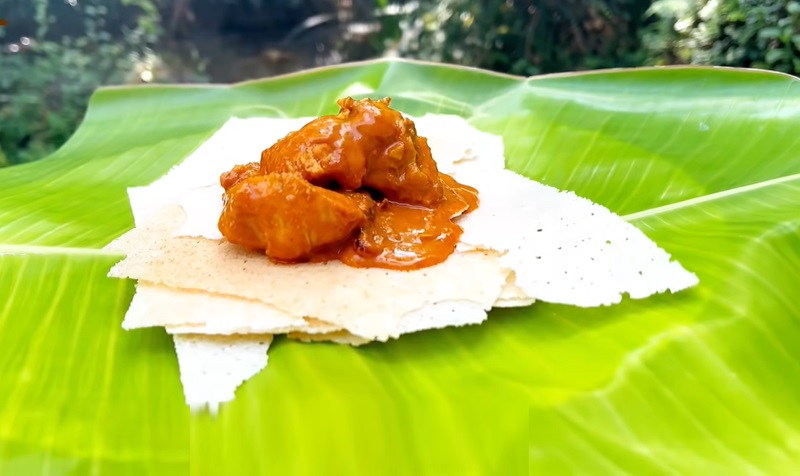
Kori Rotti is a unique and delicious combination of chicken curry and crispy rice wafers, known as rotti. The term "Kori" refers to chicken, while "Rotti" means a thin, crisp bread made from rice flour. To prepare Kori Rotti, the chicken is cooked in a flavorful blend of spices, coconut, and tamarind, resulting in a rich and tangy curry. The curry is then poured over the crispy rottis, which have been soaked briefly in water to soften them. The rottis soak up the delicious flavors of the chicken curry, becoming slightly chewy yet still retaining their crunch. Kori Rotti is often served as a main course during special occasions, festivals, and weddings in Karnataka. It is a dish that showcases the diverse flavors and ingredients of the region, combining the spiciness of the curry with the unique texture of the rottis.
Kosambari
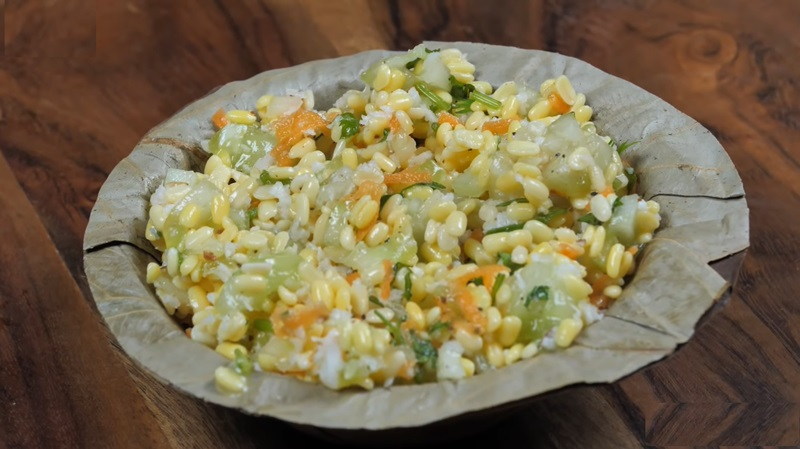
Kosambari is a traditional Karnataka dish that is commonly served as a side dish or salad during festivals and special occasions. It is a refreshing and nutritious dish made with a combination of soaked lentils or legumes, fresh vegetables, and tempered with aromatic spices. The main ingredient in kosambari is split moong dal or chana dal, which is soaked in water until it becomes soft and plump. This is then mixed with finely chopped cucumbers, carrots, tomatoes, and coriander leaves. The salad is seasoned with a tadka (tempering) of mustard seeds, curry leaves, green chilies, and asafoetida, which adds an extra burst of flavor.
Kuswar
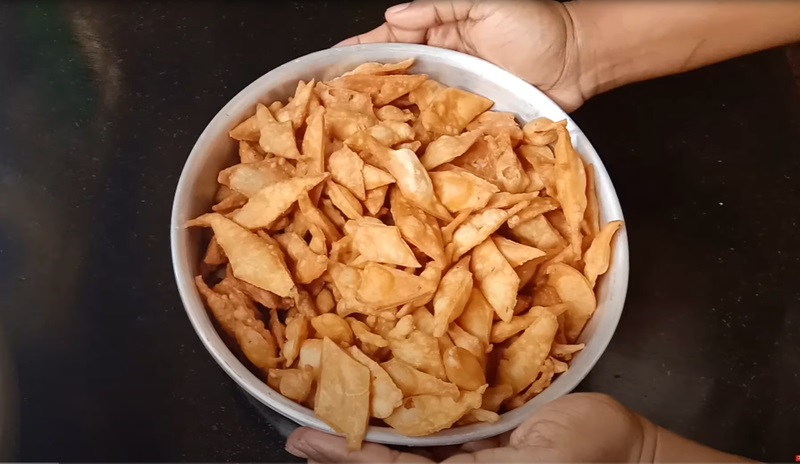
Kuswar is a set of festive sweets and snacks made and exchanged by Christians of the Mangalorean Catholic community of Karnataka. Some popular components of Kuswar include deep-fried delicacies like nevri (crispy dumplings filled with sweet coconut), kulkuls (deep-fried sweet dough curls), and shankarpali (sweet and savory diamond-shaped crackers). There are also a range of moist and flavorful sweets such as bebinca (a layered coconut cake), dodol (a jaggery and rice flour sweet), and kashi halwa (a semolina-based sweet).
Mangalore Bajji
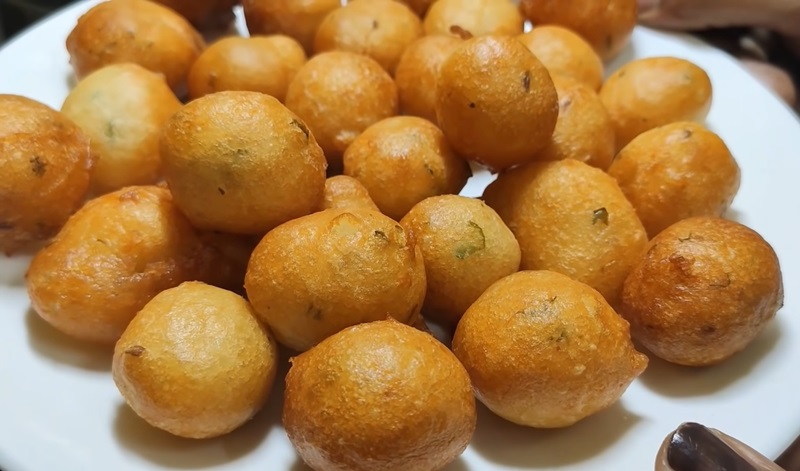
Mangalore bajji, also known as goli baje or mangalore bonda, is a popular snack originating from Mangalore in Karnataka, a coastal city in South India. This deep-fried dish boasts a crispy exterior and a soft, delectable interior, making it an excellent choice for tea-time. The key ingredients in Mangalore bajji include all-purpose flour, yogurt, and a blend of spices such as ginger, green chilies, curry leaves, and asafoetida. By combining these ingredients with water, a thick batter is formed. Small portions of this batter are then dropped into hot oil and fried until they achieve a glorious golden brown color. The end result is a delightful, light snack that pairs wonderfully with coconut chutney or sambar. The tangy and slightly spicy flavors of these bajjis are simply irresistible. With their crisp outer layer and fluffy, melt-in-your-mouth interior, they offer a delightful texture that is loved by everyone.
Jhunka

Jhunka is a simple yet flavorful dish made with besan (gram flour) as the main ingredient. Jhunka is typically served as a side dish and is often paired with a staple like rice or chapati. To prepare Jhunka, besan is mixed with water, spices, and sometimes chopped onions and green chilies. The mixture is then cooked on a stovetop until it thickens and forms a smooth consistency. The result is a creamy and slightly tangy dish with a hint of spice. J
Akki Rotti
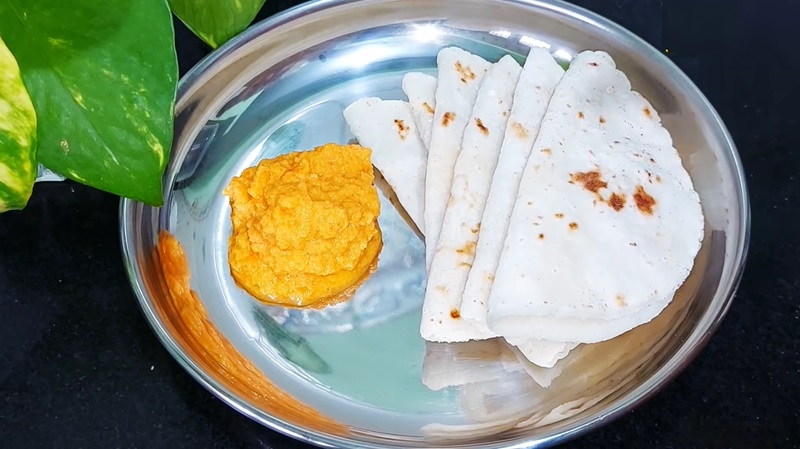
Akki rotti is a delightful flatbread made from rice flour, originating from Karnataka in South India. With its distinct taste and texture, this traditional dish is a favorite among locals. The name itself reflects its main ingredients - "akki" meaning rice and "rotti" meaning bread. To create akki rotti, rice flour is combined with water and kneaded into a soft dough. To enhance the flavor, a range of ingredients like onions, grated coconut, green chilies, coriander leaves, and cumin seeds are added. The dough is then shaped into thin circles and cooked on a griddle until golden brown, resulting in a crispy, fragrant bread. Typically served hot, akki rotti pairs well with accompaniments like coconut chutney, tomato chutney, or sambar, a lentil-based vegetable stew.
Pundi
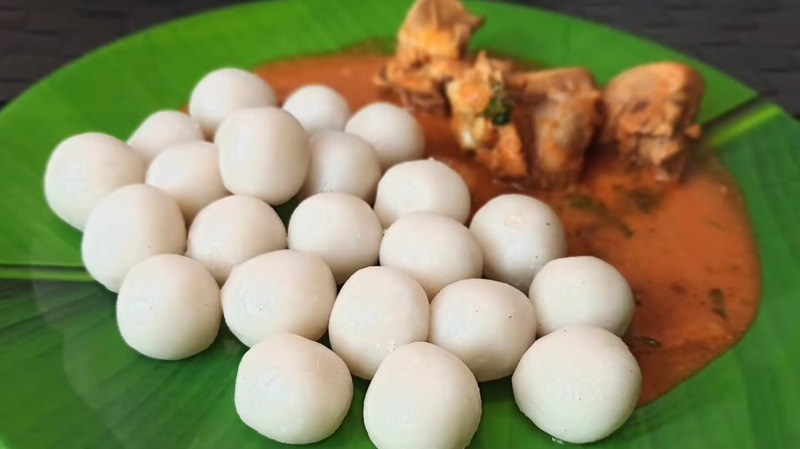
Pundi is a steamed rice dumpling that is made by grinding soaked rice into a coarse batter, which is then shaped into small round dumplings. These dumplings are typically steamed in a special vessel called an idli steamer. The preparation of pundi involves a few simple steps, but the result is a delicious and satisfying dish. The rice batter is mixed with salt and shaped into small balls, which are then placed in the steamer and cooked until they become soft and fluffy. Pundi is usually served with a variety of chutneys or sambar, a lentil-based vegetable stew. The texture of Pundi is similar to that of idli, but the taste is distinct. It has a mild and slightly tangy flavor that pairs well with the spicy and flavorful accompaniments.
Mangalorean Chicken Sukka

Mangalorean Chicken Sukka is a delicious and spicy dish that originates from the coastal region of Karnataka, India. The dish is made with succulent pieces of chicken that are marinated in a blend of spices such as red chili powder, turmeric, coriander, and cumin. The marinated chicken is then cooked in a thick gravy made from coconut, onions, tomatoes, and a variety of spices. The dish gets its unique taste from the addition of roasted and ground spices like black pepper, fennel seeds, and cinnamon. The chicken is slow-cooked in the spicy gravy until it becomes tender and absorbs all the flavors. The dish is then garnished with fresh coriander leaves and served hot with steamed rice or Indian breads like roti or naan.
Mangalore Buns
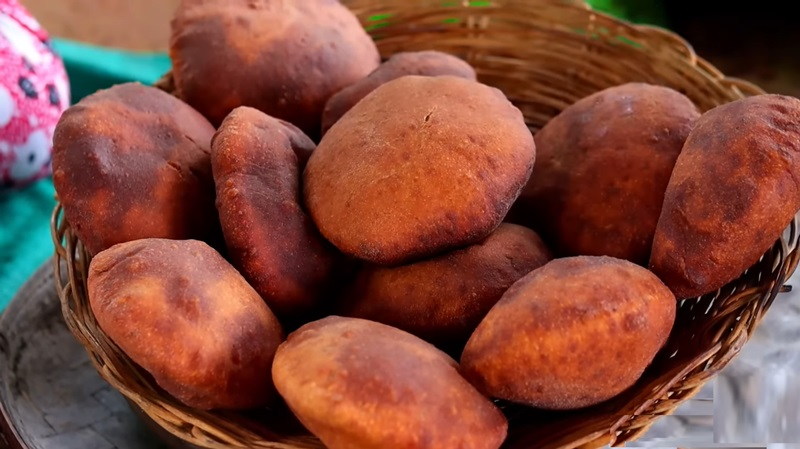
Mangalore buns are soft and fluffy deep-fried breads that have a slightly sweet and tangy taste. They are made using a combination of ripe bananas, all-purpose flour, yogurt, sugar, and a pinch of salt. The dough is allowed to ferment overnight, which gives the buns their distinct flavor and texture. Once the dough has fermented, it is rolled out into small circles and deep-fried until they turn golden brown. The buns are best enjoyed when served hot with a side of coconut chutney or sambar, which complements their sweetness perfectly.
Vangibath

Vangibath is a popular rice dish from the state of Karnataka in southern India. It is a flavorful and aromatic dish made with rice, brinjal (eggplant), and a blend of spices that gives it a distinctive taste. To prepare Vangibath, the rice is first cooked and then tempered with spices like mustard seeds, cumin seeds, curry leaves, and dry red chilies. The brinjal is diced and sautéed separately with onions and a spice paste made from roasted peanuts, sesame seeds, and spices like coriander, cumin, and red chili powder. The sautéed brinjal mixture is then combined with the cooked rice and gently mixed together, ensuring that all the flavors blend well. The end result is a delightful dish with a perfect balance of flavors.
Chicken Ghee Roast
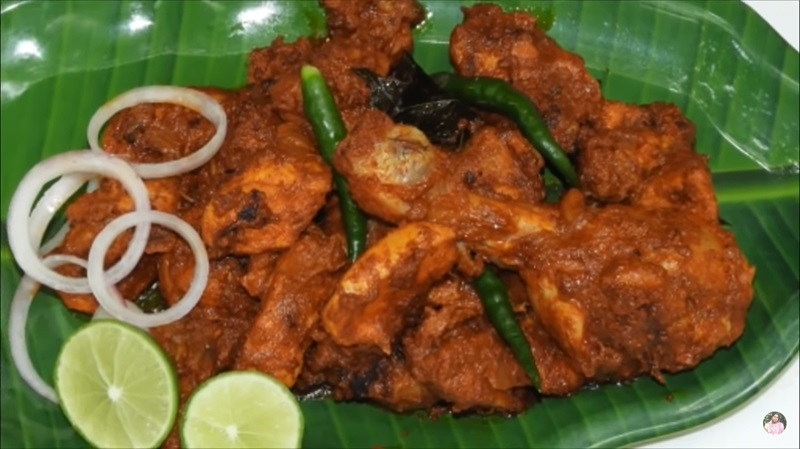
Chicken ghee roast is a a fiery and flavorful chicken preparation that is cooked in a rich blend of ghee (clarified butter) and aromatic spices. To prepare this dish, chicken pieces are marinated with a mixture of spices such as red chili powder, turmeric, ginger-garlic paste, and yogurt. The marinated chicken is then cooked in a generous amount of ghee, which imparts a rich and buttery flavor to the dish. The spices in the marinade blend perfectly with the ghee, resulting in a spicy and tangy taste. What sets chicken ghee roast apart is the special spice mix known as 'ghee roast masala', which is made by roasting and grinding a combination of red chilies, cumin, coriander seeds, fenugreek seeds, and other spices. This masala is added to the chicken along with some tamarind pulp, which gives the dish a tangy twist.
Karadantu
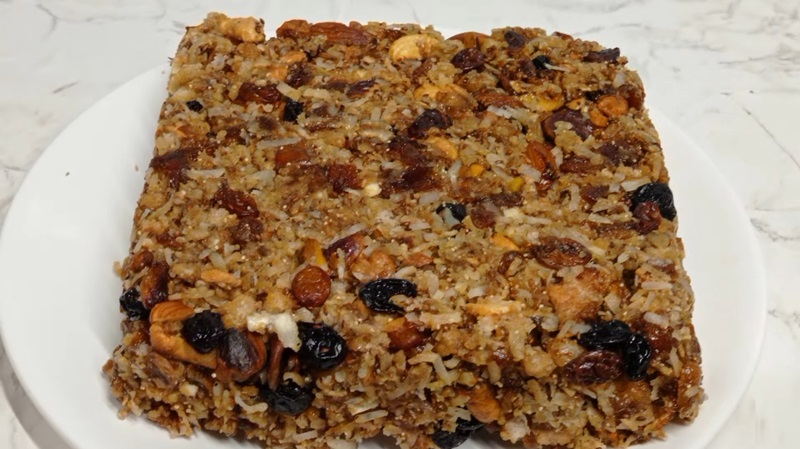
Karadantu, a beloved delicacy from Karnataka, India, translates to "fried edible gum" in Kannada. It's a delectable chewy confection crafted from edible gum, dry fruits like almonds, cashews, and pistachios, and jaggery, melded together into a dense, sweet treat. This traditional dessert offers a delightful blend of textures, with the crunchy nuts contrasting the chewiness of the gum and the sweetness of jaggery. Often flavored with cardamom or nutmeg, Karadantu embodies the essence of Karnataka's culinary heritage, cherished for its rich taste and nutritional value.
Kodubale
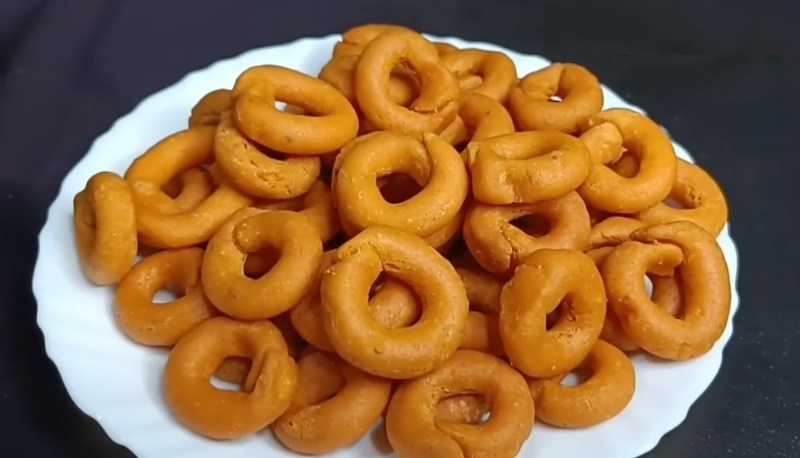
Kodubale is a savory delight shaped into small, twisted rings. Made from a mixture of rice flour, besan (gram flour), coconut, roasted peanuts, and a blend of aromatic spices like cumin, chili powder, and asafoetida, Kodubale boasts a unique flavor profile. The dough is intricately kneaded, twisted, and then deep-fried to golden perfection, resulting in a crispy texture and a burst of flavors with every bite. Often enjoyed as a tea-time snack or during festive gatherings, Kodubale epitomizes the culinary craftsmanship of Karnataka and is cherished for its crunchy texture and addictive taste.
Ragi Rotti
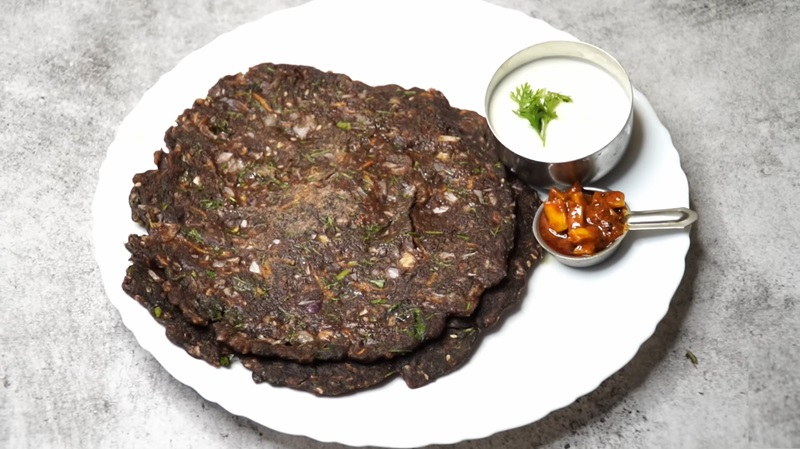
Ragi rotti is a traditional dish from the southern state of Karnataka in India. It is a nutritious and delicious flatbread made using ragi flour, also known as finger millet flour. Ragi is a staple grain in Karnataka and is known for its numerous health benefits. To prepare ragi rotti, the ragi flour is mixed with water and kneaded into a smooth dough. The dough is then divided into small portions and rolled out into thin, round rotis. These rotis are then cooked on a hot griddle or tawa until they become golden brown and crispy. Ragi rotti is typically served with a variety of accompaniments such as coconut chutney, pickle, or yogurt. The dish is loved for its unique earthy flavor and the crispy texture of the rotis.
Maddur Vada
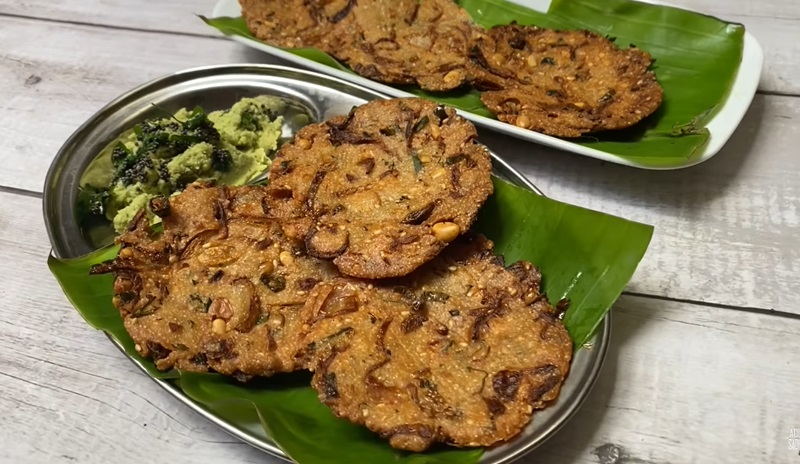
Maddur vada is a crispy and flavorful delicacy named after the small town of Maddur, where it originated. The maddur vada is made with a unique combination of ingredients, primarily consisting of rice flour, all-purpose flour, semolina, onions, green chilies, curry leaves, and a blend of spices. The dough is carefully mixed together and shaped into small flat discs before being deep-fried to perfection. What sets the Maddur vada apart is its distinct taste and texture. The outer layer is crispy and golden-brown, while the inner part remains soft and fluffy. The addition of onions and spices adds a burst of flavors, making it a delightful snack to savor.
Thambuli
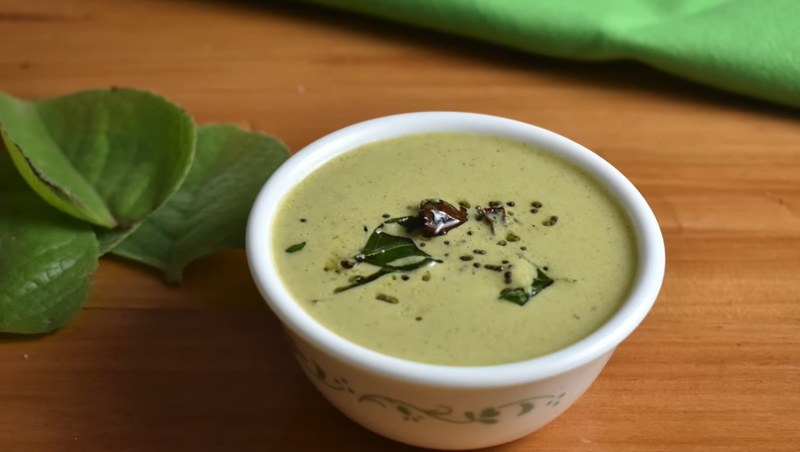
Thambuli, a traditional dish from Karnataka, India, is akin to raita or buttermilk. Derived from the Kannada word "thampu," meaning cool or cold, thambuli is known for its cooling properties. It's primarily made with various greens, carrots, beetroots, and similar vegetables as the key ingredients. The preparation involves grinding these vegetables with spices and mixing them with yogurt. Notably, all the ingredients are used raw, without any cooking involved. Thambuli is cherished for its refreshing taste and is a popular choice for hot days, offering a nutritious and cooling accompaniment to meals in Karnataka.
Ravè Unde
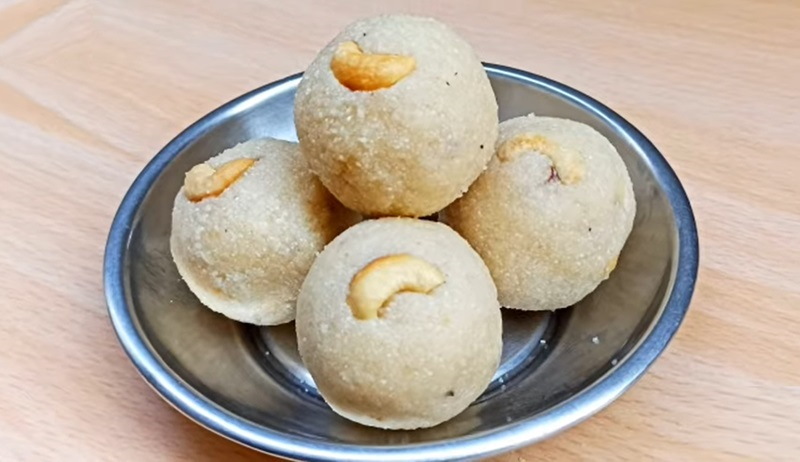
Ravè unde is a beloved sweet treat, particularly renowned in Karnataka. It's crafted from fine semolina, dried coconut, and sugar, forming a delightful combination of flavors and textures. Milk and ghee are commonly added to the mixture to help bind the ingredients together, enhancing the richness and consistency of the sweet.
Upsaaru
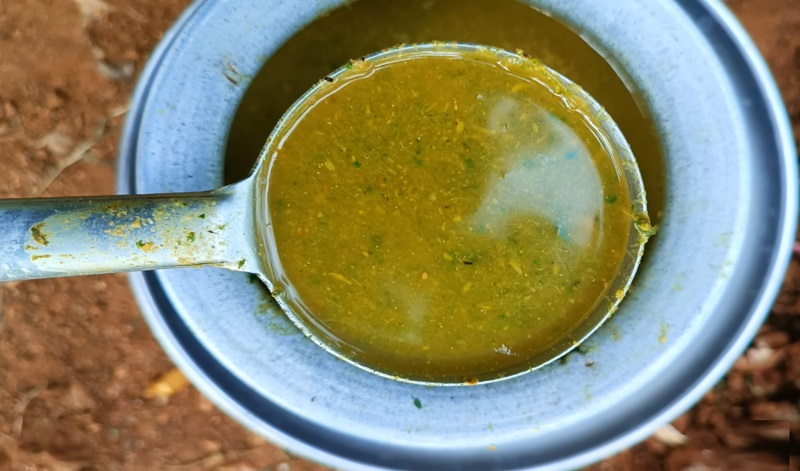
Upsaaru is a thin and spicy lentil soup made with a variety of lentils like toor dal, moong dal, or a combination of both. It is typically seasoned with a blend of spices like cumin, mustard seeds, turmeric, and asafoetida. The lentils are cooked until soft and then mashed to create a smooth and creamy consistency. The soup is then tempered with ghee or oil and flavored with onions, tomatoes, garlic, and curry leaves. Upsaaru is often enjoyed with raagi mudde.
Ajethna
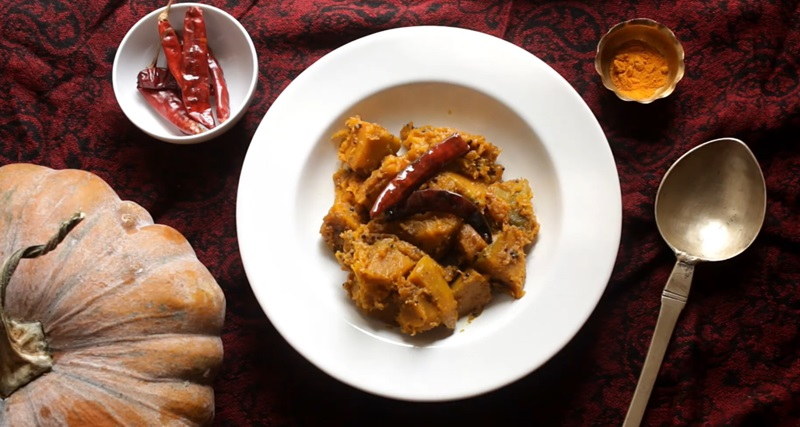
Ajethna is a traditional dish from Karnataka cuisine that is known for its rich flavors and unique preparation style. It is a dry dish made with a variety of vegetables and spices, cooked in coconut oil, and tempered with mustard seeds, curry leaves, and red chilies. The dish typically includes a combination of vegetables such as cluster beans, french beans, beetroot, snake gourd, bitter gourd, ladies finger, and others, which are finely chopped or grated. These vegetables are then stir-fried in coconut oil until they are cooked but still retain their crunchiness. The spices used in Ajethna include turmeric, red chili powder, coriander powder, and cumin powder, which are added to enhance the flavor of the dish.
Majjige huli
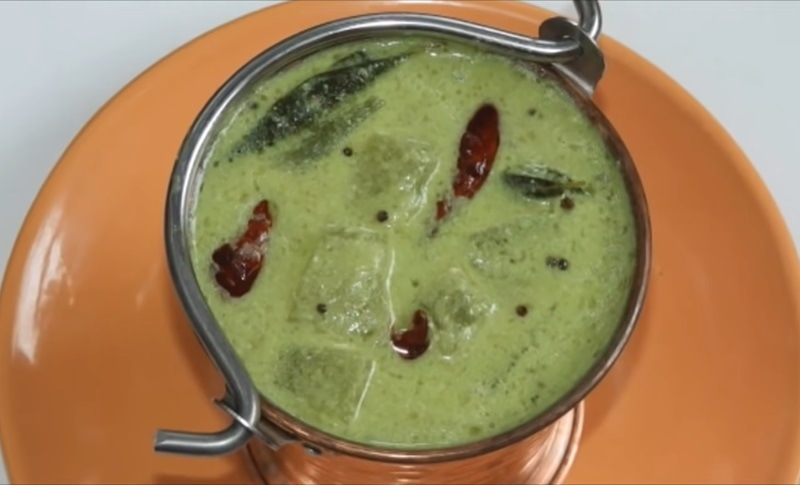
Majjige huli, also known as "Mor kuzhambu" or "Buttermilk curry," is a popular and traditional dish from the state of Karnataka in India. This tangy and flavorful curry is made with buttermilk as the base, which is then spiced with a combination of ground coconut, green chilies, and roasted lentils. To prepare Majjige huli, the buttermilk is simmered with a tempering of mustard seeds, curry leaves, and dried red chilies. The ground coconut mixture is then added to the curry, along with vegetables like ash gourd, okra, or cucumber, which adds a refreshing and crunchy texture to the dish.
Oondees
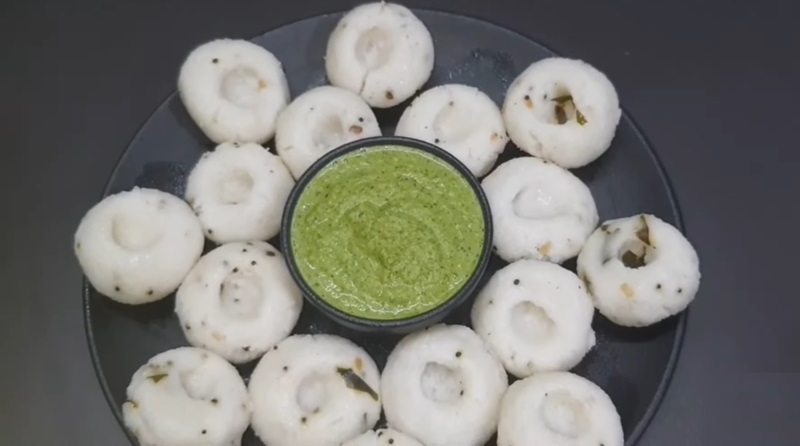
Oondees, a cherished breakfast delight originating from the Mangalore region of India, are crafted from semolina or rice. Traditionally, rice was soaked and flattened by pounding, but in contemporary times, ready-made idli rava is commonly used. The preparation involves boiling semolina (rava) with coconut, sugar, salt, and traditional spices until it reaches a semi-hard consistency. The mixture is then shaped into spheres approximately four inches in diameter and steamed to perfection.
Puri
-1708655644.jpg)
Puri is a deep-fried, puffed bread made from a dough of wheat flour, salt, and water. It is a staple in many households and is typically served during breakfast or as a snack. The process of making puri involves kneading the dough to a smooth consistency and then rolling it out into small, round discs. These discs are then deep-fried in hot oil until they puff up and turn golden brown. The end result is a light and fluffy bread with a crispy exterior. Puri is often served with a variety of accompaniments, such as potato curry, coconut chutney, or sambar.
Papadam
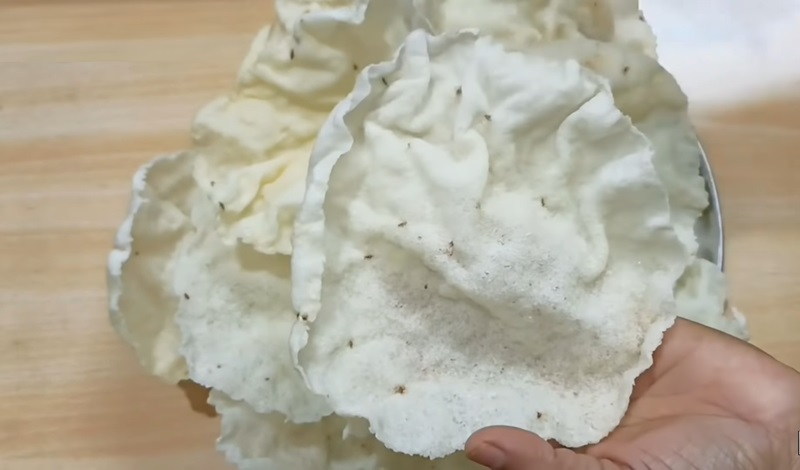
Papadam, also known as papad, is a thin, crispy wafer made from lentil or rice flour, seasoned with various spices and herbs. The preparation of papadams involves a meticulous process of dough making, rolling, shaping, and sun-drying. In Karnataka, papadams are typically served as a side dish or an accompaniment to a meal. They can be enjoyed plain or with a variety of toppings and dips, such as chutneys or pickles. The flavors of papadams can range from mild and savory to spicy and tangy, depending on the ingredients used in the seasoning. Papadams are a versatile dish that can be enjoyed in different ways. They can be roasted over an open flame, deep-fried, or microwaved to achieve a crispy texture.
Chapati
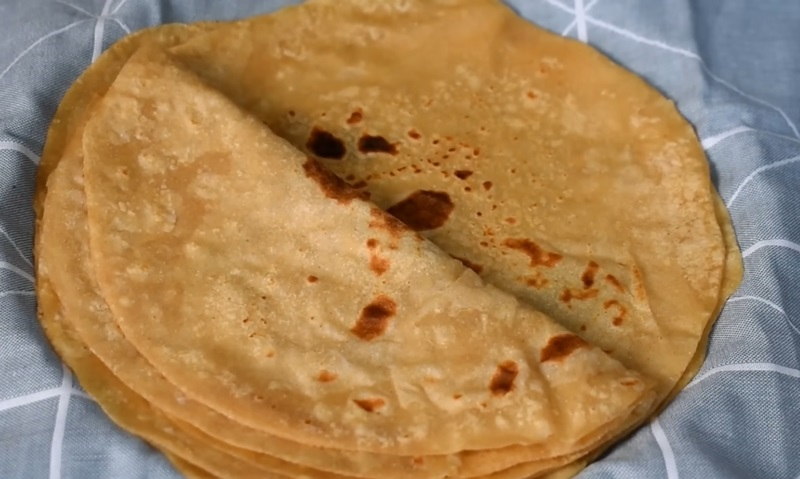
Chapati is a staple in Karnataka cuisine and is a popular accompaniment to a variety of dishes. Chapati is made from a dough consisting of whole wheat flour, salt, and water. The dough is kneaded until it becomes soft and pliable. Small portions of the dough are then rolled out into thin, round discs, which are cooked on a hot griddle or tawa. The cooking process involves placing the rolled-out dough onto the hot griddle, allowing it to cook for a short period of time, and then flipping it over to cook the other side. The heat from the griddle causes the dough to puff up, creating a light and fluffy texture. Chapati is typically served hot and can be enjoyed with a wide range of dishes. It is often eaten with curries, lentils, and vegetable dishes.
Modak
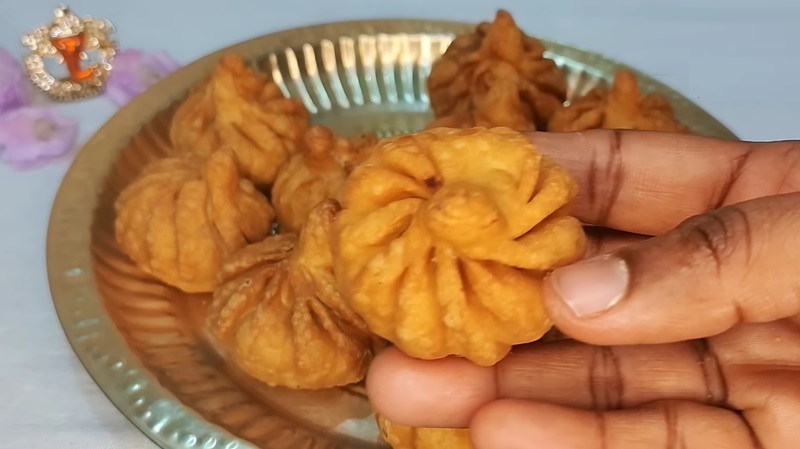
Modak is a popular delicacy that is often prepared during festivals and special occasions, especially during the festival of Ganesh Chaturthi. Modak is made using a dough made from rice flour or wheat flour, which is then filled with a sweet stuffing. The stuffing is typically made from grated coconut, jaggery, and cardamom powder. Other variations of the stuffing may include dry fruits such as almonds or cashews. The dough is rolled out into small circles, and a spoonful of the sweet stuffing is placed in the center. The edges of the dough are then gathered and sealed to form a dumpling-like shape. The Modaks are then steamed or fried until they become soft and golden brown.
Patrode
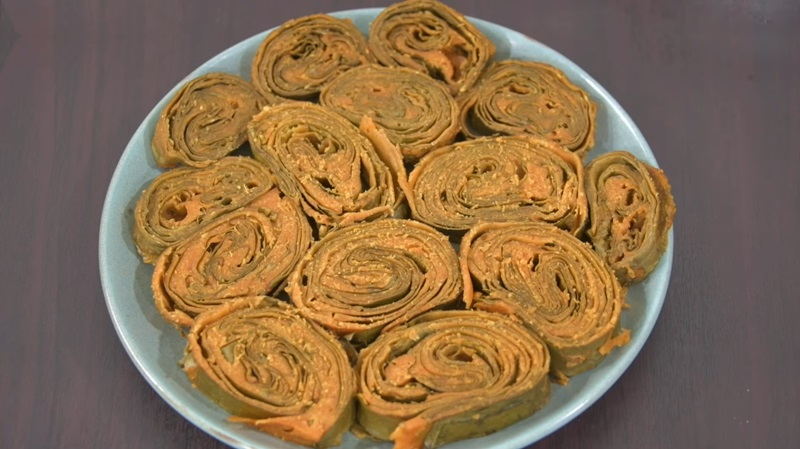
Patrode is a traditional snack made with colocasia leaves, which are rolled and steamed to perfection. The name "patrode" is derived from the words "patra" meaning leaf and "ode" meaning roll. To make patrode, a thick batter is made using rice flour, gram flour, and a variety of spices like cumin, coriander, turmeric, and chili powder. The colocasia leaves are then smeared with this batter, rolled tightly, and steamed until cooked. Once steamed, the rolls are allowed to cool and then sliced into thin rounds. The patrode rolls have a unique flavor and texture. They are soft and slightly sticky on the inside, while the outer layer is crispy and golden brown. The combination of spices gives the dish a burst of flavors, making it a delightful treat for the taste buds.
Kombdi Vade
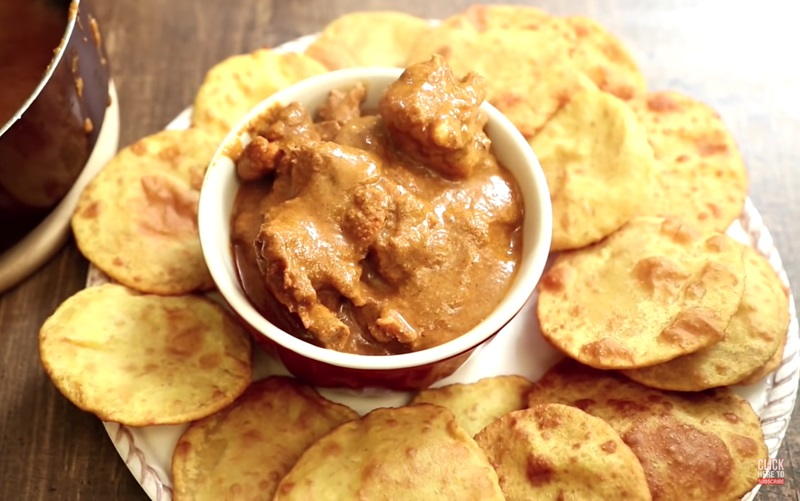
Kombdi vade is a delicious and hearty combination of chicken curry and crispy vade, which are deep-fried breads made from lentils and spices. To prepare Kombdi vade, first, the chicken is marinated in a blend of spices such as turmeric, red chili powder, and coriander powder. It is then cooked with onions, tomatoes, ginger-garlic paste, and a variety of aromatic spices. The resulting chicken curry is rich, flavorful, and has a perfect balance of spices. Vade, on the other hand, are made by grinding soaked lentils along with ginger, green chilies, and other spices. The batter is then shaped into small discs and deep-fried till they turn golden and crispy. These vades provide a crunchy and savory accompaniment to the spicy chicken curry. The combination of the tender chicken curry and the crispy vades creates a delightful contrast of textures and flavors.
Bonda
-1708655127.jpg)
Bonda is a deep-fried dumpling made from a batter consisting of various ingredients. The base of the batter is made from gram flour (besan) and rice flour, which give it a crispy texture. To this, a mixture of mashed potatoes, onions, green chilies, ginger, and spices like turmeric and cumin are added, giving it a flavorful and savory taste. The filling is then shaped into small balls or patties and deep-fried until golden brown. The combination of the crispy outer layer and the soft, flavorful filling makes it a delightful and satisfying snack.
Parotta
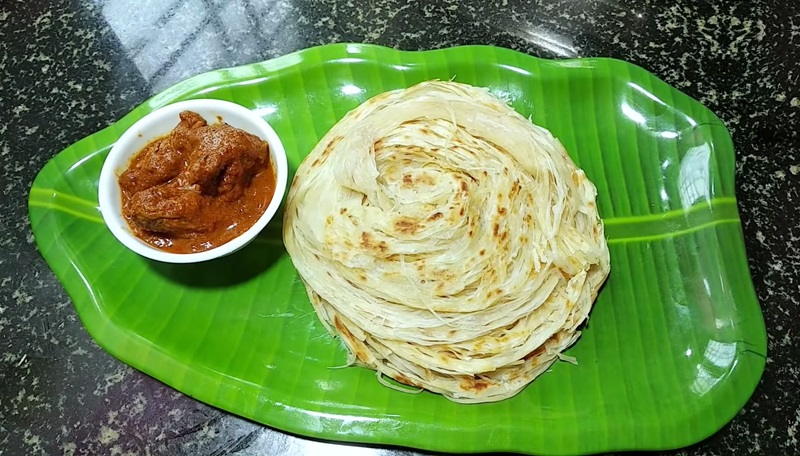
Parotta is a flaky, layered bread made from refined flour and cooked on a griddle, resulting in a soft and crispy texture. Parotta is usually served with a variety of side dishes and gravies. The preparation of parotta involves kneading the dough with oil or ghee, which gives it its distinct flaky layers. The dough is then rolled out into thin circles, folded into layers, and cooked on a hot griddle with a generous amount of oil or ghee. The parotta is flipped multiple times during cooking to ensure even browning and crispiness. Parotta is typically enjoyed with an array of side dishes, including spicy curries like chicken or mutton curry, vegetable kurma, or egg curry.






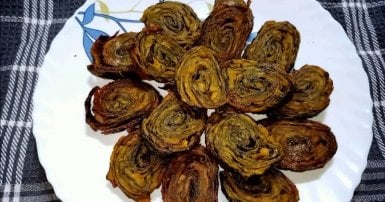
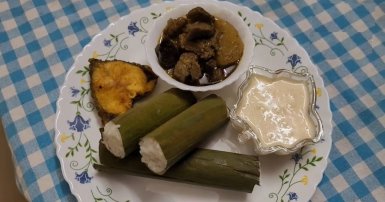
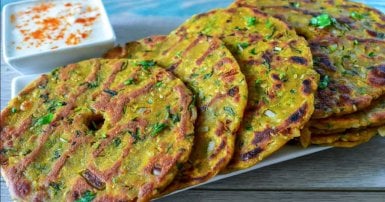
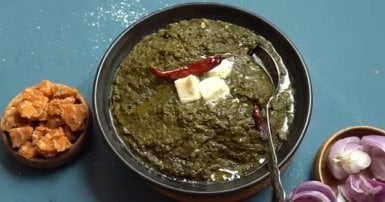
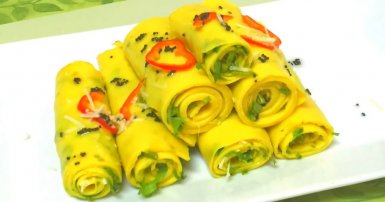
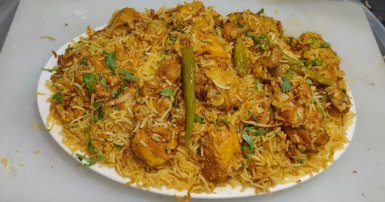

-1709813013.jpg)


